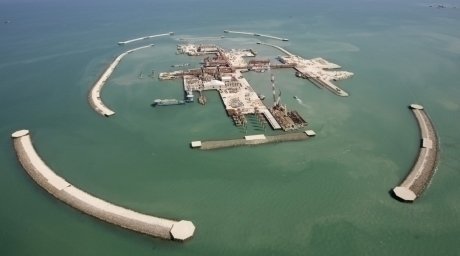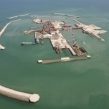
ConocoPhillips’ Exit from Kashagan Revives Rivalries in Kazakhstan’s Oil Sector
Publication: Eurasia Daily Monitor Volume: 9 Issue: 222
By:

On November 26, Kazakh media reported that the US oil company ConocoPhillips was planning to sell its 8.4-percent stake in Kazakhstan’s Kashagan oil field on the Caspian Sea. In the context of continuously falling revenues (in the third quarter of 2012, ConocoPhillips lost about 14 percent of its profits, earning slightly over $15 billion), its top managers decided to retrieve the money invested in a number of energy assets abroad. According to some estimates, such an operation would consist of the sale of $20 billion worth of assets the world over by the end of this year. India’s ONGC Videsh Limited, which is part of the state-owned Oil and Natural Gas Corporation, was named as the potential buyer of ConocoPhillips’ stake in the largest oil field ever discovered during the last 30 to 50 years. Should this deal be successfully concluded between the two companies in early 2013, the Indian government might gain long-term access to Kazakhstan’s lucrative oil and gas industry for about $5 billion (Newskaz.ru, November 26).
On the following day, Kazakhstan’s Oil and Gas Minister Sauat Mynbayev, who has now been closely involved in Kashagan-related negotiations for over five years, stated that the deal could not be considered definitive until it obtained the approval of a special state commission. Under Article 12 of the law on subsoil use, whose upgraded version was adopted by the parliament in June 2010, Kazakhstan’s government enjoys a preemptive right to acquire stakes in oil, gas and other mineral deposits. This article also provides the government specific purchasing privileges relative to other stakeholders, in order to “preserve and strengthen the resource and energy basis of the national economy.” Furthermore, even should the government abstain from declaring its intention to buy up ConocoPhillips’ stake, such an expression of interest is possible on behalf of other North Caspian Operating Company (NCOC) participants, including ExxonMobil, Royal Dutch Shell, Total, Eni and Inpex (Bnews.kz, November 27). The joint venture NCOC was created in 2008 and operates the Kashagan field as well as other energy resources.
In early October, speaking at the KAZENERGY Association’s annual meeting, KazMunaiGaz (KMG) Chairman Lyazzat Kiinov said that his company might be interested in acquiring Conoco’s 8.4-percent share in Kashagan, in compliance with its growth strategy designed to make KMG one of the world’s 30 largest energy companies. In February 2012, Kazakhstan’s President Nursultan Nazarbayev already decided to unblock $4 billion from the National Fund for the purpose of supporting KMG’s commercial plans (the National Fund currently contains over $47 billion of reserve money collected from the oil and gas revenues). This gesture could be largely interpreted as an indication of Kazakhstan’s willingness to increase its participation in the Kashagan oil field, only a few years after KMG had already boosted its weight (in 2008, KMG increased its stake from 8.33 percent to 16.8 percent). In August 2012, it was reported that two of the NCOC members, ExxonMobil and Shell, were also seeking to increase their respective stakes as well as to extend the term of the production-sharing agreement for another 20 years. According to undisclosed sources working in the Consortium, both companies were even ready to exit the project unless their demands were met by the Kazakhstani Government (Radio Azattyk, October 3; Ak Zhayik, February 29).
While the purchase of ConocoPhillips’ current stake is theoretically possible both for KMG and any of its Kashagan partners, either of these scenarios has serious drawbacks. Sergey Smirnov, an Almaty-based expert of the Institute of Political Solutions, believes that KazMunaiGaz would be unable to offer a competitive price, given its already wide-ranging portfolio of investments into various energy projects. According to Smirnov, even if KMG used the National Fund’s money to take over Conoco’s share, it would be hard pressed to bear the burden of additional expenditure related to the first phase of production. In May 2012, its cost was once again upgraded from $38 billion to $46.3 billion, while the initial estimates made by Italy’s Agip back in 2005 hardly amounted to $5 billion. As regards a potential bid from a Western stakeholder in Kashagan, it may be expected that neither of the consortium’s largest members would be glad to see any of its partners control as much as 25 percent in the NCOC. Therefore, the Western energy companies may collectively prefer to accept a new participant in the NCOC with a minor share (Guljan.org, October 11; Radio Azattyk, October 3).
While ONGC’s deal with ConocoPhillips stills needs to be notified to the government of Kazakhstan and subjected to double approval—formally from the state authority and informally from the consortium—there is already also much speculation about the potential involvement of Chinese oil companies. In August 2012, Energy Intelligence Group reported that the China National Petroleum Corporation (CNPC) had hired the Hong Kong-based CITIC Resources Holdings Ltd. to conduct talks with both ExxonMobil and Shell about the purchase of their respective shares in Kashagan in the name of the Chinese oil giant. Although neither of the Western companies earnestly considered a possibility of exiting Kashagan, it became clear that China was ready to pay for its right of entry. Kazakhstan-based energy expert Olzhas Baidildinov believes that the announcement of the ConocoPhillips-ONGC deal might only whet China’s appetite. Even though Kazakhstan may be interested in attracting India’s capital and thus diversifying its commercial relations, Beijing’s technical expertise in oil production still remains largely superior to that of New Delhi. Moreover, in the case of additional legal problems with Western oil companies, China’s CNPC could provide enough money to compensate for their eventual exit without compromising production (Tengrinews.kz, November 28; Bloomberg, August 30).
Currently, Kashagan is regarded as one of the most promising oil fields in the world. Its total oil reserves are estimated at 38 billion barrels or six billion tons, out of which ten billion barrels are lying at levels directly accessible to contemporary drilling methods. Furthermore, this supergiant field may conceal up to one trillion cubic meters of natural gas. In late August 2012, CNN Money ranked Kashagan as the world’s most expensive energy project worth around $116 billion (Forbes.kz, November 29; Newskaz.ru, November 26; CNN Money, August 29)




